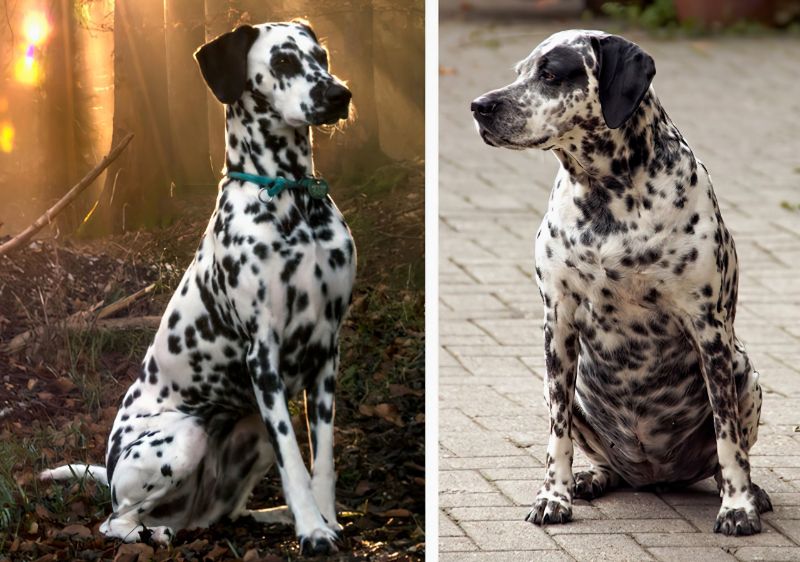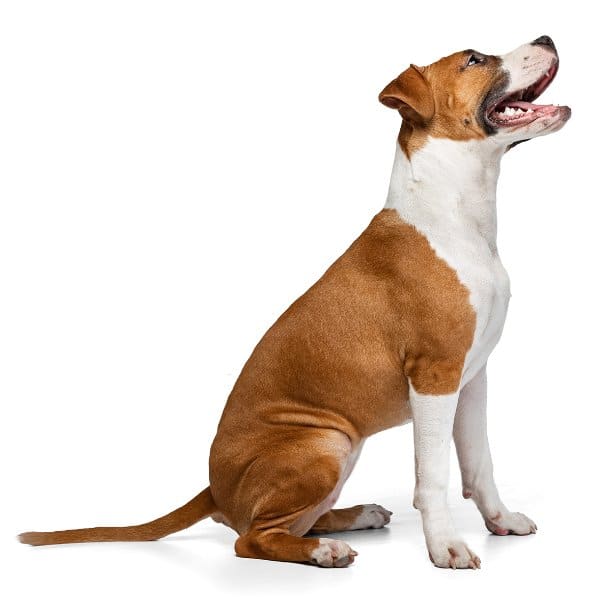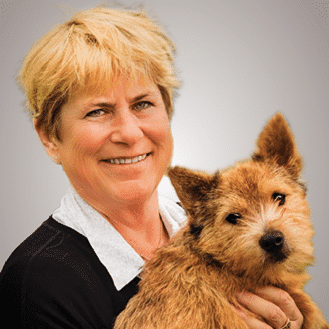
Home » How To Make Your Dog Live Longer

As my dog grows older, I often look at his graying face and hope I will have him for many more years. And when it becomes obvious that I will have to say goodbye to one of my dogs, I always wish that we could have just a few more days together. I’m sure you have felt this way too.
Well, that’s one wish that you can make come true! You can easily increase your dog’s life span by up to two years and it won’t cost you a thing. In fact, it will save you money! Too good to be true? Here’s how!
In 2019, a group of scientists published a study that looked at the lifespans of over 50,000 dogs of 12 different breeds living in North America. That’s A LOT of dogs! They asked a very simple question. What is the expected lifespan of dogs that are overweight when they visit a veterinary hospital in middle age (between 6-1/2 and 8-1/2 years) as compared to dogs that are of normal weight?
The authors defined overweight as being a 4 or 5 on a body condition scale of 1 to 5. Normal weight dogs were a 3 on that scale. The 5-point scale represented dogs that were described by veterinarians on visual examination and palpation as being:
Dogs in both the overweight and normal categories were then matched by breed, sex, visit age, visit year, latitude, and longitude.
Breed/Size |
Neutered Males Median Lifespan (Years) |
Spayed Females Median Lifespan (Years) |
||||
Normal Weight* |
Overweight* |
Difference |
Normal Weight* |
Overweight* |
Difference |
|
|
16.0 |
13.9 |
2.1 |
16.1 |
14.0 |
2.1 |
|
|
15.5 |
13.7 |
2.8 |
15.5 |
13.6 |
1.9 |
|
|
16.2 |
13.7 |
2.5 |
15.5 |
13.5 |
2.0 |
|
|
14.5 |
13.8 |
0.7 |
14.5 |
13.9 |
0.6 |
|
|
16.4 |
14.1 |
2.3 |
16.4 |
14.1 |
2.3 |
|
Average Small Dog |
15.7 |
13.8 |
1.9 |
15.6 |
13.8 |
1.8 |
|
14.9 |
13.4 |
1.5 |
14.8 |
13.3 |
1.5 |
|
|
15.2 |
13.2 |
2.0 |
15.3 |
13.3 |
2.0 |
|
|
13.8 |
13.0 |
0.8 |
13.8 |
12.9 |
0.9 |
|
Average Medium Dog |
14.6 |
13.2 |
1.4 |
14.6 |
13.2 |
1.4 |
|
12.4 |
11.8 |
0.6 |
12.3 |
11.7 |
0.6 |
|
|
12.5 |
12.1 |
0.4 |
12.3 |
12.5 |
0.6 |
|
|
13.3 |
12.5 |
0.8 |
13.5 |
12.7 |
0.8 |
|
|
13.3 |
12.7 |
0.6 |
13.6 |
13.0 |
0.6 |
|
Average Large Dog |
12.9 |
12.3 |
0.6 |
13.1 |
12.5 |
0.6 |
Salt et al. J Vet Intern Med 2019;33:89-99
*As determined during a veterinary examination at middle age
You can easily increase your dog’s life span by up to two years and it won’t cost you a thing.
The authors selected dogs of a variety of sizes and from 12 of the most common breeds for this study, with more than 3,800 dogs of each breed. It is well documented that dogs that have had their ovaries or testicles removed have a lower metabolic rate and tend to gain weight unless their food intake is carefully monitored. Thus, it was important for the study to ensure that intact dogs were not compared with spayed or neutered dogs. After examining the data, sexually intact dogs were removed from the study because there were too few of them. This is certainly a concern for the future of pet dogs, but that is a topic for another time. Nonetheless, this study only examined lifespans of spayed or neutered dogs.
For all 12 breeds of dogs, dogs that were overweight died at a significantly younger age (Table 1.). The estimated reduction in median lifespan for the overweight group relative to the normal weight group ranged from five months for male German Shepherd Dogs, to two years and six months for male Yorkshire Terriers. Although the authors looked at only 12 breeds, the consistent finding that overweight dogs had shorter lives suggests that this effect is likely to affect every breed.
The difference in lifespan between overweight and normal weight dogs was greatest for the small and medium-sized dogs and less for dogs of the larger breeds. This might be explained by the fact that there is an increased prevalence of fatal cancers in large breed dogs that are spayed and neutered. That might negate the positive effect of body condition in these breeds.

The financial impact of having an obese dog was estimated to be approximately $2,000 a year.
Dogs that are overweight are more susceptible to a variety of chronic conditions, including osteoarthritis and other orthopedic diseases, diabetes, cancer, respiratory, cardiovascular and renal disease as well as a reduced quality of life. In fact, in a recent review, the financial impact of having an obese dog was estimated to be approximately $2,000 a year. This, and the reduced annual cost of dog food for a normal-weight dog as compared to an overweight one, provides significant financial incentives (in addition to the clear lifespan incentive) to keep our dogs at a normal weight.
One last point. Although it is tempting to do so, we cannot assume that the median survival ages noted in these studies are typical for these breeds. That’s because this study only included dogs that had not died before 9-1/2 years of age and that continued to be cared for in the veterinary practices from which the data were obtained. That was the only way the authors could ensure accurate data. Since many dogs, unfortunately, die before 9-1/2 years of age, these data show artificially extended lifespans. Darn it! I sure would have loved to know that the median lifespan of a Golden Retriever was 13.3 to 13.5 years!
Still, the great news about this study is that we do have some control over how long our dogs live. By keeping your dog at a normal weight throughout its life, you can stack the longevity cards in your dog’s favor. If you do, when the day comes that you know it is time to say goodbye, the chances are that your dog is already much older than it would have been had it been overweight. And that’s great news!
How To Make Your Dog Live Longer
Featured photo: Figure 1. A Fit Dog (left) and a Fat Dog (right)
